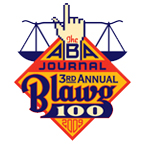Primer on LEED Credentialing
By: Patrick J. Bello, LEED AP, Drexel University Earle Mack School of Law, Class of 2012
In April 2009 the U.S. Green Building Council launched LEED v3. Prior to this upgrade, any professional seeking to achieve LEED AP status had a choice of only three exam tracks: 1.) New Construction; 2.) Commercial Interiors; or 3.) Existing Buildings. Upon successful completion of the accreditation exam, you received a single encompassing designation as a “LEED AP.” There was only one exam necessary, and there were no prerequisites beyond being a professional in some field related to real estate and development. Today however, under the new credentialing formats, there is a 2-Step process before a professional can obtain the LEED-AP designation.
STEP 1: GREEN ASSOCIATE
The first step requires that a person interested in becoming LEED accredited first meet the criteria listed online for becoming a “Green Associate.” If you meet these requirements, you are eligible to sit for the Green Associate exam. A Green Associate is considered to have the basic overall knowledge of the LEED certification process, but they do not have any “specialized” knowledge. The "Eligibility Requirements" that one must meet to take the Green Associate exam are far more relaxed than the LEED AP requirements. Essentially, you must prove that you are a professional in some field related to "sustainability" – it is quite broad. You would need to get letters (from employers/clients/etc.) verifying that you do in fact work in a sustainability profession, then send them in to the GBCI for approval. It is all part of the "Application Process" to verify eligibility to sit for the exam. The GBCI website provides a detailed step-by-step guide outlining the credentialing process.
STEP 2: LEED-AP with Specialty
Step two, becoming a “LEED-AP,” entails more stringent prerequisites – namely, in order to be eligible to sit for the LEED-AP exam, you must have worked on a LEED certified project within the last three years. If you do not meet this requirement, the highest level of accreditation you can achieve is the Green Associate designation. But if the LEED-AP requirements are met, you may sit for both exams at once – but note, that in order to become a LEED-AP, you must still first successfully complete the Green Associate exam track as well.
If the person seeking accreditation does have the required experience on a LEED project, professionals are required to select a specialty under which they wish to become accredited. The specialties are referenced as, LEED AP:
1.) Neighborhood Development (ND),
2.) Building Design and Construction (BD+C),
3.) Interior Design and Construction (ID+C),
4.) Homes,
5.) Operations and Maintenance (O+M).
According to the Green Building Certification Institute (GBCI), the new variations, “show differentiation in a growing and competitive industry, and they allow for varied levels of specialization.”
Exam prep workshops, webinars and reference guides are available to view or purchase online on the USGBC website. Professionals who completed the LEED exams prior to the 2009 changes, are in essence “grandfathered” into the new program. They retain status as LEED AP’s without having to go through any additional re-testing or completing continuing education credits. LEED AP’s completing the exams prior to the 2009 switch are given a 2-yr window during which they may choose to select a specialty – enrollment period ends in the fall of 2011. For example, a professional who had taken and passed the LEED for New Construction v2.2 exam before April 2009 will never lose their LEED AP status, but may elect to update their enrollment by selecting a specialty, such as LEED AP, BD+C. The upgraded status will however require either continuing education or re-testing in order to be maintained.
So just as the LEED certification process has become subject to more strict requirements and post-certification “checks,” so too has the accreditation process.

 Shari focuses on energy, environmental and building code policy, representing international companies, non-profits and trade associations in their policy and communications campaigns
Shari focuses on energy, environmental and building code policy, representing international companies, non-profits and trade associations in their policy and communications campaigns

